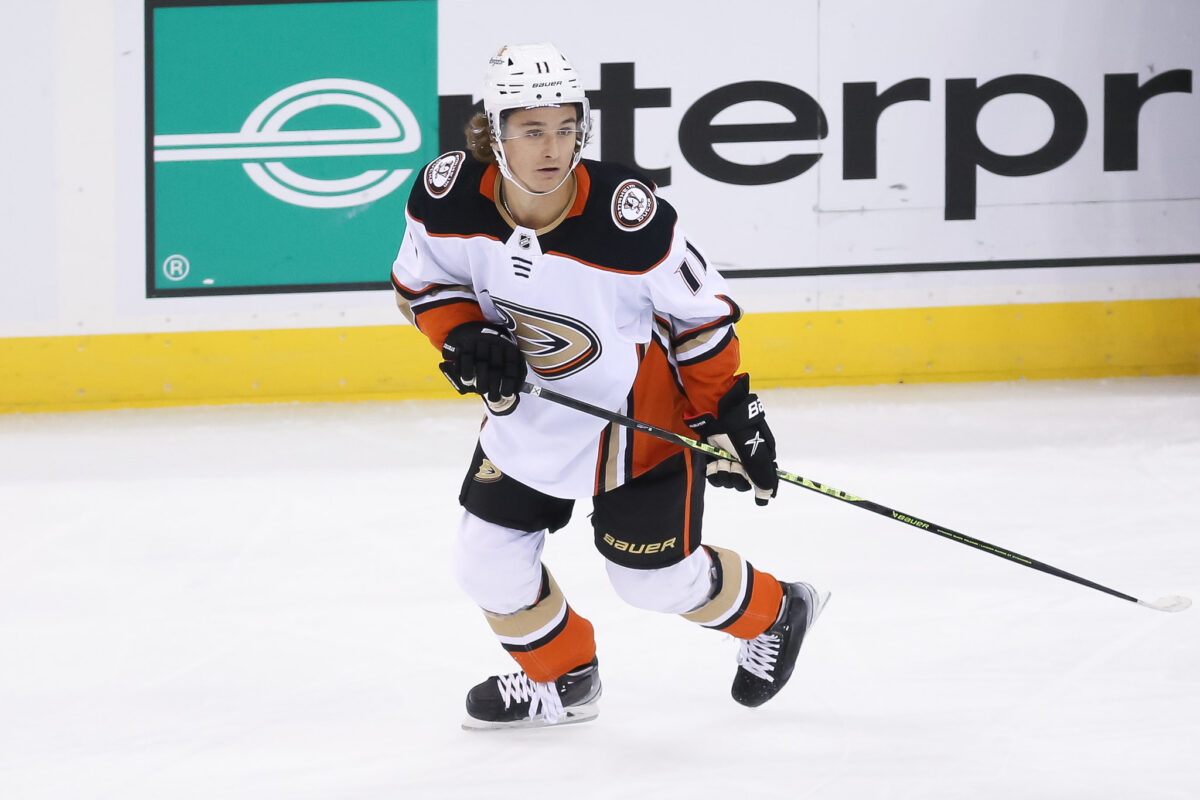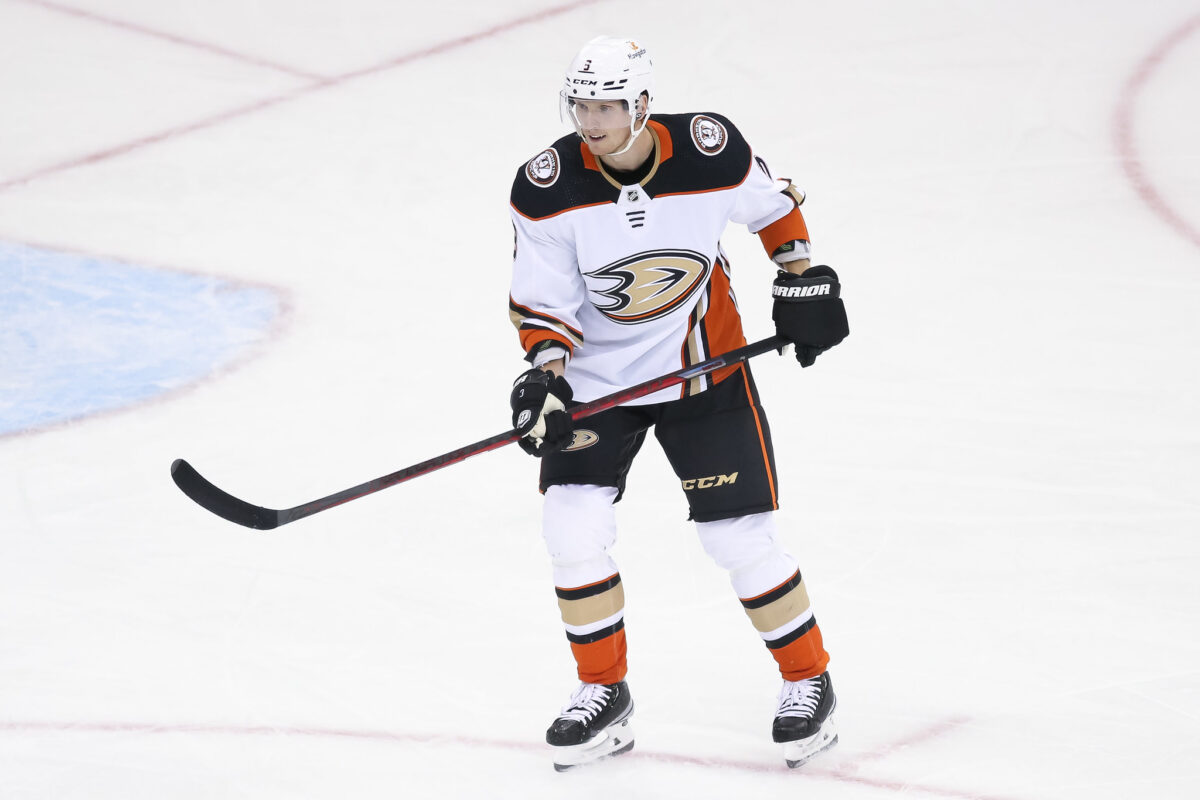The Anaheim Ducks hit the 30-game mark of the 2022-23 season on Dec. 13 with a 7-1 loss to the Toronto Maple Leafs. With a 7-20-3 record, the Ducks are firmly at the bottom of the NHL standings, one point behind the Chicago Blackhawks but with three more games played.
Related: NHL Rumors; Kings, Ducks, Oilers, Jets, Canucks
Expectations for the Ducks this season weren’t high. They are a team on the rise but competing for a playoff spot in a top-heavy Pacific Division this soon was always a tall order. Regardless, free agent signings and the continued development of Trevor Zegras, Jamie Drysdale, and a slew of other prospects meant that they should see an improvement over last year. Instead, this version of the team feels like a continuation of the stripped-down roster that finished 4-11-3 after the trade deadline a year ago.

Obviously, a lot has gone wrong to lead to the current situation. Let’s take a look at some of the significant numbers behind the Ducks’ first 30 games.
Ducks Rank 32nd in Offense and Defense
In the early portion of the season, the Ducks’ offense seemed prepared to try to outscore their defensive deficiencies. A 5-4 comeback win in their season opener against the Seattle Kraken presented a formula for Ducks’ success, but the offense is still not in the right place to consistently light the lamp. Through 30 games, the team has averaged 2.27 goals per game, the lowest figure in the league. Combined with a league-worst 4.27 goals allowed per game, this has led to some tremendously lopsided results on the scoreboard. Their losses include:
- 12 games by three-plus goals
- Five games by two goals
- Six games by one goal (includes three overtime losses)
Along with the league-low scoring figures, the Ducks also rank last in penalty-kill percentage, 31st in power-play percentage, last in shooting percentage, and last in shots allowed. Goaltending hasn’t fared much better, as each of John Gibson, Anthony Stolarz, and Lukas Dostal have posted a save percentage below .900. Their combined .887 save percentage is 26th in the league.
John Klingberg Earns $1 Million per Assist
When John Klingberg signed a one-year, $7 million deal with Anaheim in the offseason, it was clear he didn’t factor into their long-term plans. Klingberg was looking for a longer-term deal as an unrestricted free agent for the first time in his career but couldn’t find a willing suitor. At 30 years old, his age and the Ducks’ competitive window aren’t suitable for a long-term deal, but the one-year deal appeared mutually beneficial. For Klingberg, it was a chance to play with a raw but talented roster and showcase his skills for a trade deadline buyer and another chance for a big payday in the offseason. For Anaheim, a $7 million contract helped them reach the salary cap floor, and trading Klingberg at the deadline could add to their growing stockpile of picks and prospects.

Klingberg’s been pinned as a high-risk, high-reward style of defenseman throughout his career, but his 23 games in a Ducks’ sweater have seen minimal returns. With only one goal and seven assists, he’s tied for third with Kevin Shattenkirk for points among Ducks’ defensemen. In his own zone, results have been predictably poor. He’s been on the ice for 134 high-danger chances against, compared to only 72 similar chances for. He ranks in the bottom 10 among defensemen with 26.51 expected goals against and a 44.44 percent Corsi For (minimum 400 minutes). In addition, a lower-body injury held him out of the lineup for seven games.
Related: Buffalo Sabres Should Trade for Defenseman John Klingberg
The gamble that Klingberg made on himself in the offseason doesn’t seem to be working out, but he has plenty of time to right the ship. His deal includes a full no-move clause (NMC) until Jan. 1 and a 10-team NMC until the end of the season. General manager Pat Verbeek isn’t likely in any rush to move Klingberg, but it’s hard to imagine any return on a trade being as valuable as it was thought to be before the season began.
Ducks Flirting with Historic Futility
With 17 points in 30 games, Anaheim is on pace to finish with 46 points. This would be the lowest 82-game total in over two decades, two points fewer than the 2016-17 Colorado Avalanche, and 10 points below the Connor McDavid-hopeful Buffalo Sabres and Arizona Coyotes in 2014-15. Their minus-60 goal differential is 24 worse than the next-closest Blackhawks. Historically, the minus-150 range that they are on pace for has only been reached nine times, most recently in 1993-94 by the Ottawa Senators.
The worst team in NHL history is generally unquestioned as the 1974-75 Washington Capitals. With an 8-67-5 record (21 points) and a stunning minus-265 goal differential in their inaugural season, their futility may never be challenged. Parity is much greater in the modern NHL, but Anaheim is on a trajectory that would put them among the worst in the Salary Cap Era.
Better Days Ahead in Anaheim
I’ve been trying to maintain an air of positivity while writing about the Ducks this season. After all, they are still a rebuilding team and have a flawed roster that will result in many more losses than wins. There have been some improvements, namely from the top of the lineup. Troy Terry is building on his breakout season and has only recently fallen off a point-per-game pace with 27 points through 30 games. Zegras is also continuing to develop his offensive game. While the highlight-reel goals haven’t been as prominent, his 10 goals and 13 assists are both second-best on the team.
The 2016-17 Avalanche were previously mentioned as one of the worst teams of the modern era. In five short years, the team went from the bottom of the standings to having their names etched onto the Stanley Cup. It wasn’t an overnight process for the Avalanche. They had been rebuilding for several years before 2016. They already had Nathan MacKinnon, Gabriel Landeskog, and Mikko Rantanen by then. After failing to secure the top spot in the 2017 NHL Draft, they wound up with a generational talent in Cale Makar. Colorado returned to the playoffs the following year, and several years of fine-tuning later has resulted in this juggernaut at the top of the NHL world. With a loaded 2023 draft class, Anaheim has the chance to land a high-end talent that will help them sooner forget these rebuilding years.
Statistics courtesy of Hockey-Reference. Analytics courtesy of NaturalStatTrick. Contract info courtesy of CapFriendly.